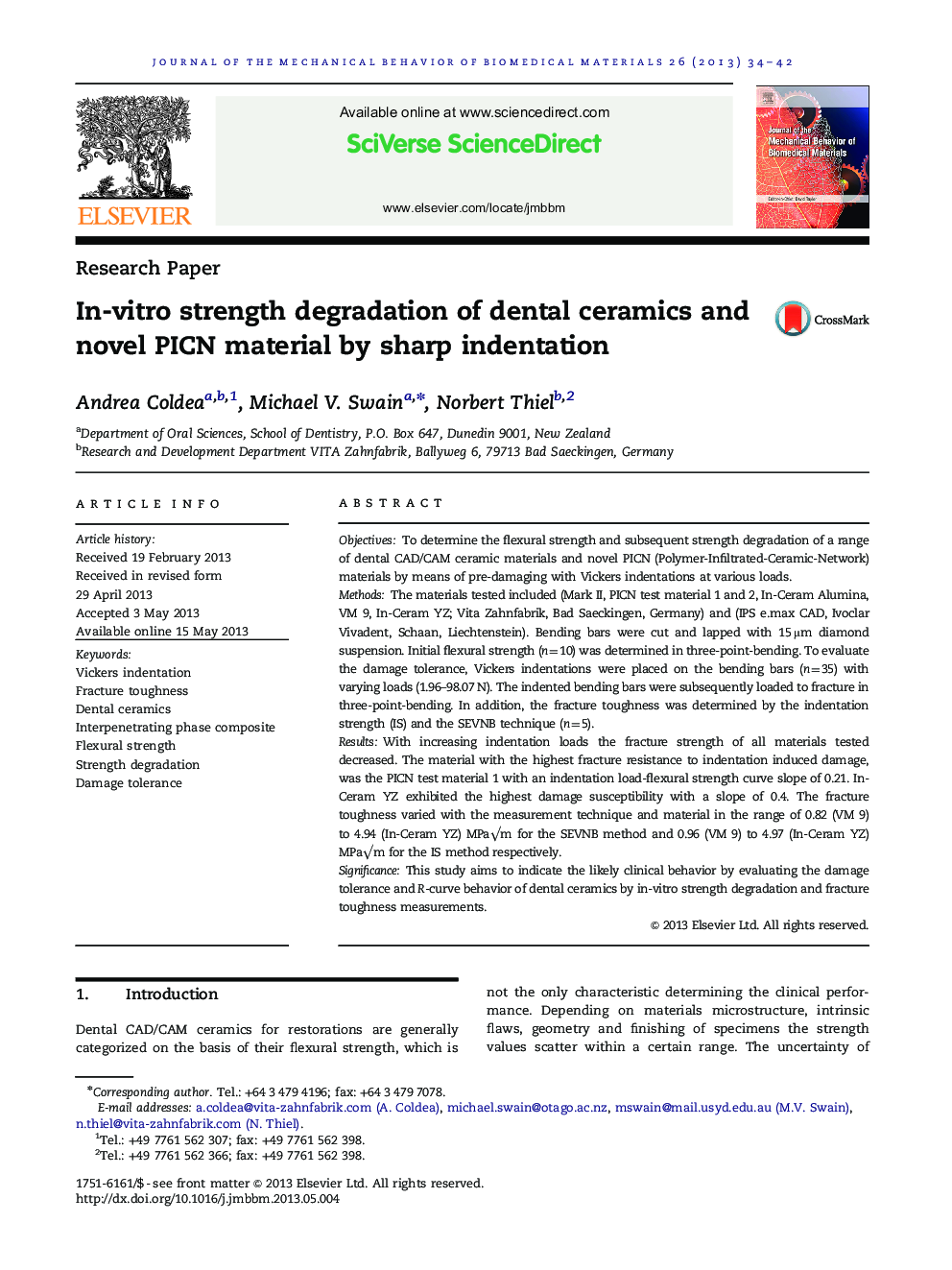| Article ID | Journal | Published Year | Pages | File Type |
|---|---|---|---|---|
| 810832 | Journal of the Mechanical Behavior of Biomedical Materials | 2013 | 9 Pages |
•Dental ceramic materials and novel Polymer-Infiltrated-Ceramic-Network materials were predamaged with a Vickers indenter.•The strength degradation and R-curve behavior were measured.•Toughening of dental materials, can be engineered by incorporation of a second lower E-modulus phase.•Interpenetrating phase ceramics exhibit the most significant R-curve behavior.•Novel Polymer-Infiltrated-Ceramic-Network materials are more damage tolerant than commonly used dental ceramics.
ObjectivesTo determine the flexural strength and subsequent strength degradation of a range of dental CAD/CAM ceramic materials and novel PICN (Polymer-Infiltrated-Ceramic-Network) materials by means of pre-damaging with Vickers indentations at various loads.MethodsThe materials tested included (Mark II, PICN test material 1 and 2, In-Ceram Alumina, VM 9, In-Ceram YZ; Vita Zahnfabrik, Bad Saeckingen, Germany) and (IPS e.max CAD, Ivoclar Vivadent, Schaan, Liechtenstein). Bending bars were cut and lapped with 15 µm diamond suspension. Initial flexural strength (n=10) was determined in three-point-bending. To evaluate the damage tolerance, Vickers indentations were placed on the bending bars (n=35) with varying loads (1.96–98.07 N). The indented bending bars were subsequently loaded to fracture in three-point-bending. In addition, the fracture toughness was determined by the indentation strength (IS) and the SEVNB technique (n=5).ResultsWith increasing indentation loads the fracture strength of all materials tested decreased. The material with the highest fracture resistance to indentation induced damage, was the PICN test material 1 with an indentation load-flexural strength curve slope of 0.21. In-Ceram YZ exhibited the highest damage susceptibility with a slope of 0.4. The fracture toughness varied with the measurement technique and material in the range of 0.82 (VM 9) to 4.94 (In-Ceram YZ) MPa√m for the SEVNB method and 0.96 (VM 9) to 4.97 (In-Ceram YZ) MPa√m for the IS method respectively.SignificanceThis study aims to indicate the likely clinical behavior by evaluating the damage tolerance and R-curve behavior of dental ceramics by in-vitro strength degradation and fracture toughness measurements.
Graphical abstractFigure optionsDownload full-size imageDownload high-quality image (135 K)Download as PowerPoint slide
